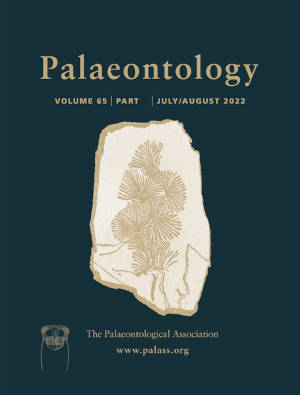Article: Ontogenetic trajectories of septal spacing and conch shape in the Late Cretaceous gaudryceratid ammonoids: implications for their post-embryonic palaeoecology
Publication: Palaeontology
Volume:
65
Part:
1
Publication Date:
2022
Article number:
e12587
Author(s):
Yoshitaka Kawakami, Naomi Uchiyama, and Ryoji Wani
Abstract
Abstract In this study, we analysed the ontogenetic trajectories of septal spacing between succeeding chambers of the gaudryceratid ammonoid, Gaudryceras tenuiliratum, which were collected in the Tomamae and Mikasa areas of Hokkaido, Japan. The ontogenetic trajectories of septal spacing in G. tenuiliratum demonstrate a general trend: two cycles of increasing to decreasing septal spacing until about the 30th septum, gradually decreasing septal spacing until about the 70th septum, and then gradually increasing septal spacing at least until about the 110th septum. The ontogenetic trajectories of the whorl expansion rate (WER) in our specimens also demonstrated that a decreasing trend changed into an increasing trend at a conch diameter of c. 5–7 mm. This conch diameter corresponds to the end of the second cycle of increasing to decreasing septal spacing occurring before about the 30th septum, at which point G. tenuiliratum possibly transitioned from planktic to nektobenthic habits. No significant differences were detected in the ontogenetic trajectories of septal spacing and conch shape between the two areas, which implies that the ontogenetic trajectory patterns of septal spacing in the Late Cretaceous ammonoids were taxonomy-dependent rather than environment-dependent, although this should be further examined with G. tenuiliratum collected from areas outside of Hokkaido.
